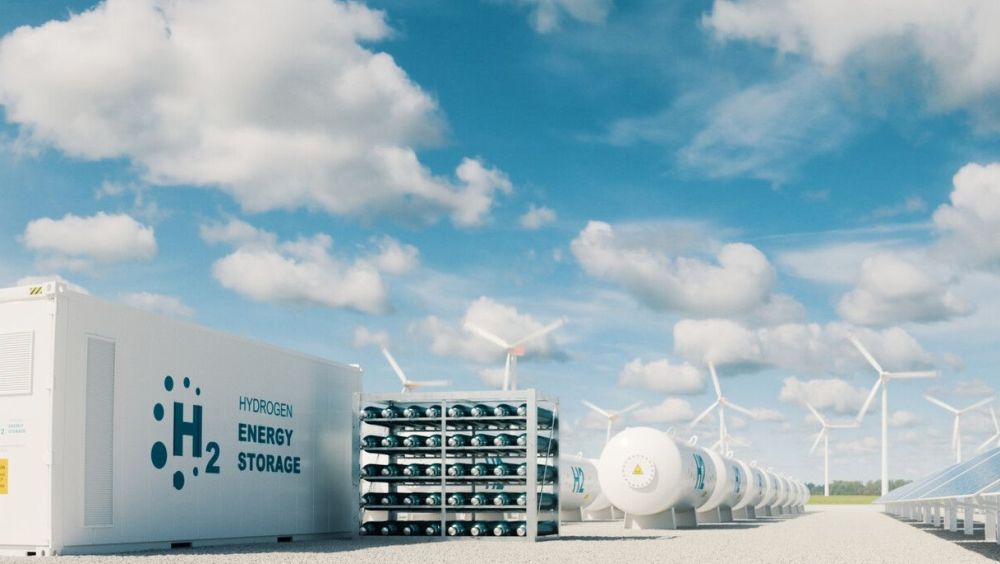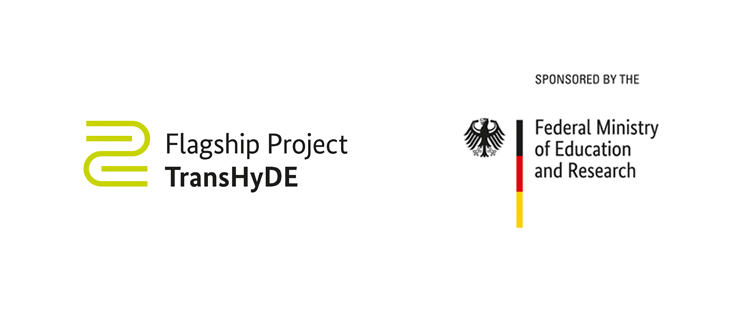| Duration: | 04/2021 - 09/2025 |
| Contracting Authority/Sponsors: |
Federal Ministry of Education and Research (BMBF) |
| Project Partners: |
50Hertz Transmission GmbH, Gasunie, GRTgaz Deutschland GmbH, Nowega GmbH, ONTRAS Gastransport GmbH, RWE Generation (und RWE Renewables), TenneT TSO GmbH, VDZ Technology gGmbH |
| Website: | Hydrogen Flagship Projects BMBF |
| Project Focus: |
System Analysis – TransHyDE Project on Transport Solutions for Green Hydrogen
In the »TransHyDE Project System Analysis« of the Hydrogen Flagship Project »TransHyDE« of the Federal Ministry of Education and Research (BMBF), important questions about the future hydrogen infrastructure will be answered: Where, when, and how will hydrogen and its derivatives be produced, used, stored, and transported in order to reach the appropriate application at the right time and under economical conditions? Within the consortium, the Fraunhofer Institute for Solar Energy Systems ISE is responsible for the techno-economic modeling of potential hydrogen ecosystems, which will form the basis for further investment decisions, as well as for sustainability assessments of the technology options considered in the project.
The services provided by Fraunhofer ISE in the project include the following points:
In the first work package, so-called model regions are being investigated. These are the early – currently still isolated from each other – nuclei of a future hydrogen infrastructure in Germany. For the analysis of these model regions, a geo-techno-economic system model is being created. Local renewable energy sources for hydrogen production as well as supply chains for imported hydrogen will be linked in a cost-optimal way with storage and transport options to enable the development of local hydrogen applications.
The results are in turn a cornerstone for a transformation of the model regions into a comprehensive national hydrogen infrastructure. To this end, various transformation paths up to the years 2030, 2040, and 2050 are being modeled, including the market ramp-up and the development of the infrastructure. The aim is to prepare for the simplest possible connection to the grid in the later development of the model regions and to evaluate the impact of such a connection on these regions in order to avoid bad investments or premature decommissioning.
A further task package deals with the evaluation of the sustainability of the technology options created in the overall TransHyDE project. The aim here is to combine the socially relevant ecological criteria with economic and social aspects. This will be achieved through the use of a uniform parameter space for the techno-economic analyses and with value limits that can be easily compared for the systemic analyses. These will then be applied in all work packages of the overall project. In addition, ecological analyses of the transport infrastructure of hydrogen and its derivatives will be carried out.
The TransHyDE hydrogen flagship project is developing and testing technologies for the transport and storage of hydrogen. In the TransHyDE project Systemanalyse (systems analysis), the transport of hydrogen is analysed in the context of the entire energy and economic system. It is funded by the Federal Ministry of Education and Research with approx. 17,5 million euros (funding reference no: 03HY201A-V).

